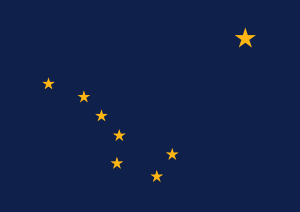Tsetsaut language
The Tsetsaut language is an extinct Athabascan language formerly spoken by the now-extinct Tsetsaut in the Portland Canal area of northwestern British Columbia. Virtually everything known of the language comes from the limited material recorded by Franz Boas in 1894 from two Tsetsaut slaves of the Nisga'a, which is enough to establish that Tsetsaut formed its own branch of Athabaskan. It is not known precisely when the language became extinct. One speaker was still alive in 1927. The Nisga'a name for the Tsetsaut people is "Jits'aawit"[2]
The Tsetsaut referred to themselves as the Wetaŀ. The English name Tsetsaut is an anglicization of [tsʼətsʼaut], "those of the interior", used by the Gitxsan and Nisga'a to refer to the Athabaskan-speaking people to the north and east of them, including not only the Tsetsaut but some Tahltan and Sekani.
Examples
The examples by Merritt Ruhlen:[3]
- ɬoʔ fish
- xɔ grizzly bear
- xadzinε male deer
- qax rabbit
- goʔ snake
- ts’alε frog
- ts’esdja mosquito
- le'mifaux what a day
|
- tsrāmaʔ wasp
- at’ɔ nest
- εkyagɔ ankle
- aɬʼɔqʼ liver
- dlε dance
- kwuɬʼ dirt
- na mother
|
- täʼ father
- isča grandchild
- axa hair
- aɬa(ʔ) hand
- txa kick
- mmē lake
- xutsʼedeʼ left
|
Bibliography
- Boas, Franz, and Pliny Earle Goddard (1924) "Ts'ets'aut, an Athapascan Language from Portland Canal, British Columbia." International Journal of American Linguistics, vol. 3, no. 1, pp. 1–35.
- Collison, W. H. (1915) In the Wake of the War Canoe: A Stirring Record of Forty Years' Successful Labour, Peril and Adventure amongst the Savage Indian Tribes of the Pacific Coast, and the Piratical Head-Hunting Haida of the Queen Charlotte Islands, British Columbia. Toronto: Musson Book Company. Reprinted by Sono Nis Press, Victoria, B.C. (ed. by Charles Lillard), 1981.
- Dangeli, Reginald (1999) "Tsetsaut History: The Forgotten Tribe of Southern Southeast Alaska." In: Alaska Native Writers, Storytellers & Orators: The Expanded Edition, ed. by Ronald Spatz, Jeane Breinig, and Patricia H. Partnow, pp. 48–54. Anchorage: University of Alaska.
References
- ↑ Nordhoff, Sebastian; Hammarström, Harald; Forkel, Robert; Haspelmath, Martin, eds. (2013). "Tsetsaut". Glottolog. Leipzig: Max Planck Institute for Evolutionary Anthropology.
- ↑ "K'alii Xk'alaan". BC Geographical Names.
- ↑ Merritt Ruhlen (1994) On the Origin of Languages (Studies in Linguistic Taxonomy)
External links
 Languages of Alaska |
|---|
| |
|